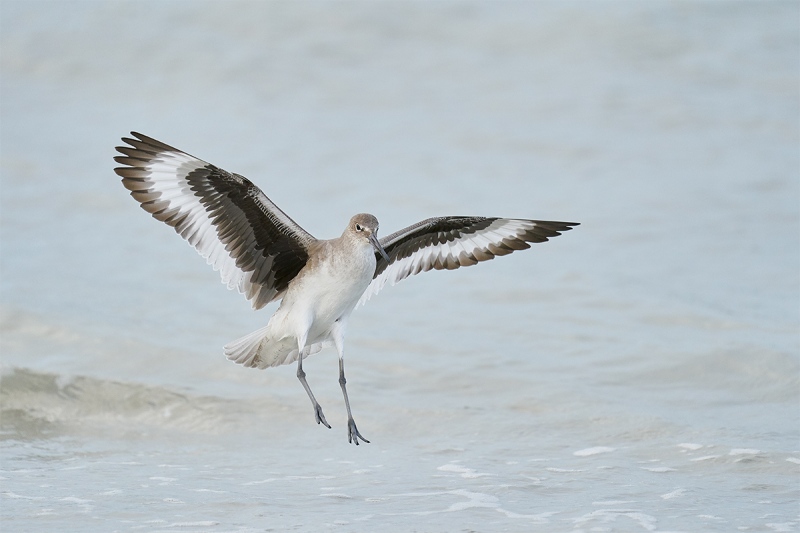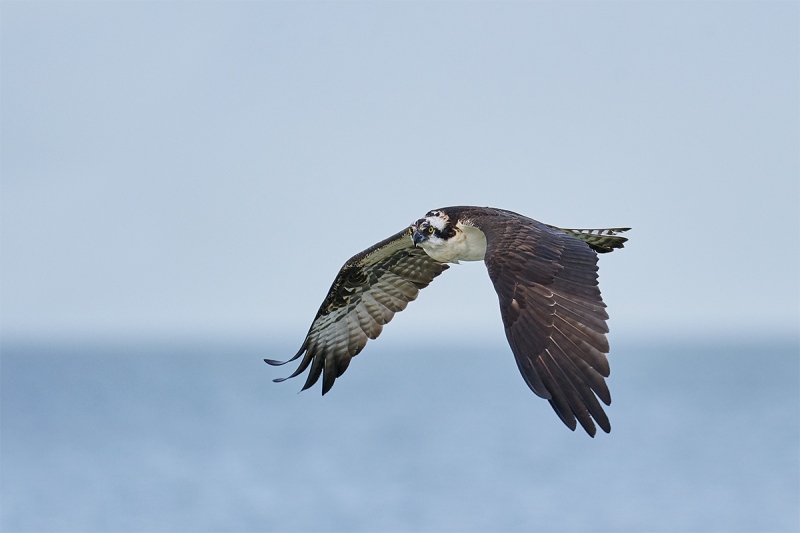What’s Up?
Private client Harry Lerner and I enjoyed a second great morning session on Saturday past at DeSoto. In the same small bay that we had worked on Friday morning conditions were even better. We had a nice collection of handsome wading birds but this time they were feeding and catching shrimp in lovely, still, dark-green water in the lee of a stand of mangroves. It was a great situation for Harry to practice his newly learn SONY Zebra exposure skills. He was nailing everything.
Best of all Harry taught me something new. At his urging and with his instruction I tried Flexible Spot (L) with tracking and did quite well. Thanks also to. Josh Anon. for pointing me in that direction. I will have a lot more to say about Flexible Spot (L) with tracking in future posts. In addition, I have a lot more to learn about the other AF tracking modes …
I am already thinking about packing for my flight to San Diego on Friday.
Please take a moment to let us know which of today’s featured images is the stronger of the two and why you made your choice. Feel free also to comment on positives and the negatives of each image.
San Diego IPT Late Registration Discount
I am offering a $400 late registration discount on the San. Diego IPT. Please e-mail if you would like to join us.
IPT Updates
Do check out the San Diego Gallery here and the Galapgos Gallery here.
- The 2020 San Diego 4 1/2-DAY BIRDS AS ART Instructional Photo-Tour (IPT) WED JAN 8, 2020 thru and including the morning session on SUN JAN 12: 4 1/2 days: $2099.(Limit: 8/Openings: 5)
- The GALAPAGOS Photo Cruise of a Lifetime IPT/The Complete Galapagos Archipelago Photographic Experience. August 17-31, 2021 on the boat. 13 FULL and two half-days of photography: $14,999.00.
You can see complete IPT details here.
BIRDS AS ART
BIRDS AS ART is registered in the U.S. Patent and Trademark Office.
Money Saving Reminder
If you need a hot photo item that is out of stock at B&H, would enjoy free overnight shipping, and would like a $50 discount on your first purchase over $1000.00, click here to order and enter the coupon code BIRDSASART at checkout. If you are looking to strike a deal on Canon or Nikon gear (including the big telephotos) or on a multiple item order, contact Steve Elkins via e-mail or on his cell at (479) 381-2592 (Eastern time) and be sure to mention your BIRDSASART coupon code and use it for your online order. Steve has been great at getting folks the hot items that are out of stock at B&H. Those include the SONY a7r IV, the SONY 200-600, the SONY 600mm f/4 GM, and the Nikon 500mm PF. Steve is eager to please.


Gear Questions and Advice
Too many folks attending BAA IPTs and dozens of photographers whom I see in the field and on BPN, are–out of ignorance–using the wrong gear especially when it comes to tripods and more especially, tripod heads… Please know that I am always glad to answer your gear questions via e-mail. Those questions might deal with systems, camera bodies, accessories, and/or lens choices and decisions.
|
|
|
This image was created on December 27, 2019 at Fort DeSoto Park, Tierra Verde, FL. I used the hand held Sony FE 200-600mm f/5.6-6.3 G OSS lens (at 600mm) with the blazingly fast AF King, the Sony Alpha a9 II Mirrorless Digital camera body. ISO 2,500. Exposure determined by Zebras: 1/2000 sec. at f/6.3 in Manual mode. AWB at 8:43am on a cloudy-bright morning. Center Zone C (tracking) AF worked perfectly by getting sharp focus on the bird’s eye. Image #1: Willet landing |
Cloudy-bright Skies Plus SONY 200-600 Plus SONY a9 II Equals Great Flight Photography: The Good
The SONY 2-6/a9II combination makes a great walk-around lens for bird photography. No tripod, no hassles. Keep the 1.4X TC in your pocket for additional reach if needed. If you encounter some good flight photography situations, you are in the driver’s seat. If I had to choose between the Nikon 500 PF with either a gripped D-850 or a D5, I would choose the SONY rig. Why? More consistently accurate AF and the 100mm of additional reach is a huge advantage. Why on the latter? Because the size of the subject in the frame is proportionate to the square of the focal lengths. In this case, 5 squared is 25 and 6 squared is 36. So the size of the bird in the frame in images made at 600mm will be greater than the size of the bird in the frame made at 500mm (assuming the same distance, of course) by a factor of 36 to 25 (1.44 times larger). The bird will be 44% (11/25) larger in the frame than the 20% that many would think when going from 500 to 600. (100/500 = 20%).
An additional advantage that the 200-600 and all zoom lenses have over all fixed focal length lenses, is that you can zoom out for better framing when needed. This holds true for both static bird photography and flight (and action) photography but is actually more important for the latter applications as human zooming is easy when photographing a static bird but pretty much impossible when you need to make the photo now!
Why Cloudy Bright for Flight?
I have long been a huge fan of cloudy-bright skies for photographing birds in flight as all shadows are eliminated and you can create images that reveal superb underwing detail (as in Image #1). Both are extremely difficult to do in sunny conditions except in the rare instances where you can press the shutter button when the bird in flight is precisely on sun angle. And even then shadows are likely except when the wing position if full upstroke.
|
|
|
This image was also created on December 27, 2019 at Fort DeSoto Park, Tierra Verde, FL. Again, I used the hand held Sony FE 200-600mm f/5.6-6.3 G OSS lens (at 600mm) with the blazingly fast AF King, the Sony Alpha a9 II Mirrorless Digital camera body. ISO 2,500. Exposure determined by Zebras: 1/2000 sec. at f/6.3 in Manual mode. AWB at 8:44am on a cloudy-bright morning. Center Bottom Zone C (tracking) AF worked perfectly by getting sharp focus on the bird’s eye. Image #2: Osprey — eye-level fly-by |
The Bad …
After the five-plus-hour morning session with Harry on Friday past, my left shoulder hurt a bit. Remember that that is the shoulder that I damaged when I fell in my home about 2 1/2 years ago. It has healed quite well but at about 6 1/2 pounds with the hood on and lens foot removed, handholding the rig for extended periods of time might cause some joint-stress for some folks (like me). Others might not be able to hand hold this rig for flight even for short sessions.
Working off a tripod will eliminate 100% of stress on the left shoulder and will help you to create sharper images. It is, however, almost always a lot easier to shoot flight with lenses that can comfortably be hand held than with tripod-mounted lenses. And hand holding is a lot more fun than having to drag a tripod around.
If I had had the rig on the tripod while photographing static subjects it is likely that I would not have been prepared for the two great flight photography opportunities that arose quickly less than two minutes apart …
The last negative is that at f/6.3 the 2-6 is a bit slower than we would like. But too make it a constant f/5.6 would have made the lens a bit heavier …
If In Doubt …
If you are in doubt about using the BAA B&H affiliate link correctly, you can always start your search by clicking here. Please note that the tracking is invisible. Web orders only. Please, however, remember to shoot me your receipt via e-mail.


Please Remember to use my Affiliate Links and to Visit the BAA Online Store 🙂
To show your appreciation for my continuing efforts here, we ask, as always, that you get in the habit of using my B&H affiliate links on the right side of the blog or Bedfords, for all of your photo and electronics purchases. Please check the availability of all photographic accessories in the New BIRDS AS ART Online Store, especially the Mongoose M3.6 tripod head, Wimberley lens plates, Delkin flash cards and accessories, and LensCoat stuff.
As always, we sell only what I have used, have tested, and can depend on. We will not sell you junk. We know what you need to make creating great images easy and fun. And please remember that I am always glad to answer your gear questions via e-mail.
I would, of course, appreciate your using our B&H affiliate links or Bedfords for all of your major gear, video, and electronic purchases. For the photographic stuff mentioned in the paragraph above, and for everything else in the new store, we, meaning BAA, would of course greatly appreciate your business. Here is a huge thank you to the many who have been using our links on a regular basis and those who will be visiting the New BIRDS AS ART Online Store as well.
Be sure to like and follow BAA on Facebook by clicking on the logo link upper right.
Typos
In all blog posts and Bulletins, feel free to e-mail or to leave a comment regarding any typos or errors. Just be right :).

















Hi, So after shooting the Sony 2-6 what’s your impression of its image quality? Which Sony lens is giving you the best IQ results? And of course zebra settings, what zebra ire parameter have you settled on. Thanks Artie for whatever Sony info you can share.
Hi David,
2-6 image quality is superb from where I sit. I see no difference in images from the 2-6 or the 600 GM or the 100-400. As long as I do my job.
See the info on the The SONY Zebras Exposure Guide Short Video in the blog post here.
With love, a
I like the willet image better. It’s a more interesting pose, and I don’t like the way the horizon cuts through the osprey image.
Thanks, Steve,
I’d rather not have the horizon line in the image but it could have been in a lot worse places …
with love, artie
I love the image of the Willet which certainly proves your bright cloudy belief with the sharp
image showing five different shades of light gray to black on the underwing.The soft gray background is a bonus.
Thanks, Bill. Good to hear from you.
with love, artie
The first image is lovely and the light and capture is perfect. I like the detail and tension though find the wavelet a bit of a distraction.
Thanks, Adam. I actually find the wavelet a big plus. It balances nicely with the empty space in front of the bird and acts sort of like a landing ramp for the bird.
I am fine with different strokes.
with love, a
Love the Osprey image Artie
Thanks, Gordon.
with love, artie
FWIW I’m guessing the “600” mm on the long end of the Sony is probably more like 570mm at most if it’s anything like the rest of the telephoto zooms. I know my Canon zoom at 400 produces a smaller image than my 400/4. I think most of those zooms are maybe 95% of the advertised focal length at most. I would be surprised if Sony was any different.
Hi Brian,
I think that that is true with zoom lenses that change their physical lengths when you change focal lengths. The 2-6 is an internal zoom so I believe that at 600mm you get true 600mm…
with love, artie